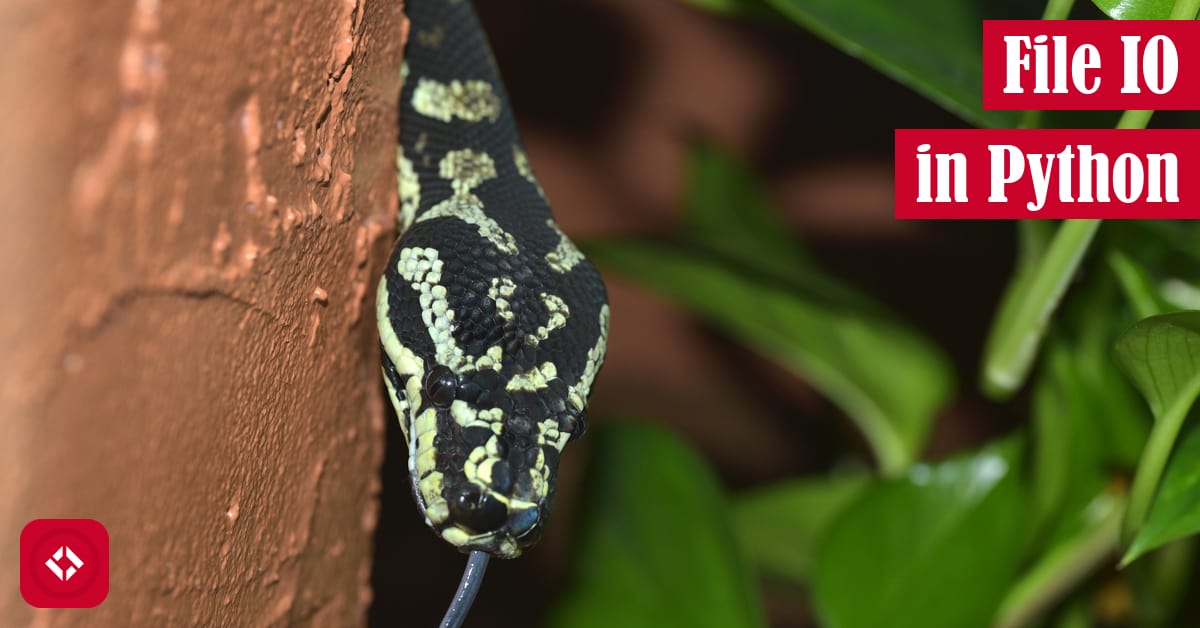Welcome back to another community edition of File IO in Every Language. This time we will be looking at how to read and write files using the popular and beloved programming language Python.
Table of Contents
File IO in Python
We’ll first present the solution in its entirety. Then, we’ll go over the code line by line:
def write_file():
try:
out = open("output.txt", "w")
except OSError as e:
print("Cannot open file: {}", e)
return
out.write("Hi! I'm a line of text in this file!\n")
out.write("Me, too!\n")
out.flush()
out.close()
def read_file():
try:
in_file = open("output.txt", "r")
except OSError as e:
print("Cannot open file to read: {}", e)
return
line = in_file.readline()
while line:
print(line.rstrip('\n'))
line = in_file.readline()
in_file.close()
if __name__ == '__main__':
write_file()
read_file()
Afterward, we’ll take a look at how to run the solution.
Writing to a File
As you may have noticed above, our file writing procedure has been broken out into its own function:
def write_file():
try:
out = open("output.txt", "w")
except OSError as e:
print("Cannot open file: {}", e)
return
out.write("Hi! I'm a line of text in this file!\n")
out.write("Me, too!\n")
out.flush()
out.close()
First, we setup up a try..except block to catch any exceptions that might occur when we want to open a file:
try:
out = open("output.txt", "w")
except OSError as e:
print("Cannot open file: {}", e)
The Python documentation tells us if open() fails to create a new file, it will raise an OSError exception. If we do get an exception, we will exit the method.
Next, if no exceptions occurred, we can now write to the file using the write() method:
out.write("Hi! I'm a line of text in this file!\n")
out.write("Me, too!\n")
As we can see, we attempt to output a couple of lines to the text file.
At this point, we need to flush the output buffer and close the file:
out.flush() out.close()
On the first line we do something known as “flushing”. When we call write() not everything may be written to the file and as some content may be in a buffer in memory. flush() ensures that everything is written to disk.
The final line closes the file as it is good practice to close any resources like files when you are finished using them.
Reading From a File
After we write to a file, we can read back from that file. Naturally, we’ve broken the reading procedure into its own function:
def read_file():
try:
in_file = open("output.txt", "r")
except OSError as e:
print("Cannot open file to read: {}", e)
return
line = in_file.readline()
while line:
print(line.rstrip('\n'))
line = in_file.readline()
in_file.close()
Just like when we were opening the file for writing purposes, we surround the code that could potentially raise exceptions in a try..except block:
try:
in_file = open("output.txt", "r")
except OSError as e:
print("Cannot open file to read: {}", e)
return
If an exception occurs, we report the error and exit the function.
Next, we have a while loop that iterates over each line in the file:
line = in_file.readline()
while line:
print(line.rstrip('\n'))
line = in_file.readline()
As we can see, the loop performs some basic processing before we print the line out onto the screen. When we get a line from the file, we also get the newline. If we print it with the newline we print an extra empty line because print automatically adds a newline by default. To fix this problem we use rstrip() to strip away any newlines at the end of the line. This loop will end when we reach EOF (end of file).
Finally, we close the file as expected:
in_file.close()
We don’t flush the file because we didn’t write anything to it, so we just close the file.
The Main Function
All of this code would be useless if we didn’t execute it somewhere. Thankfully, we can drop everything into the main function:
if __name__ == '__main__':
write_file()
read_file()
And, that’s it! We’ve conquered File IO in Python.
How To Run the Solution
As usual, you’re free to use an online Python interpreter such as the one on Repl and run the solution there. Alternatively, if you have a Python interpreter installed on your machine, you can use the following command:
and run the solution there. Alternatively, if you have a Python interpreter installed on your machine, you can use the following command:
python file-io.py
After you execute this command, you should be able to find a nearby output.txt file containing the arbitrary text we used earlier. If so, you’ve successfully run the program.
Sample Programs in Every Language
If you liked this article, and you want to check out what more we have to offer, consider subscribing to The Renegade Coder . If you’re interested in supporting this series, head over to our Sample Programs GitHub repo
. If you’re interested in supporting this series, head over to our Sample Programs GitHub repo . We can always use the help!
. We can always use the help!
Recent Posts
The infamous "name a woman" challenge has expanded into a speed run where you name 100 women. I took the challenge and failed miserably (hence why I'm hiding it behind the paywall).
It's July 2024, and I have three chapters of my dissertation drafted! Two more and we'll be ready to defend.

